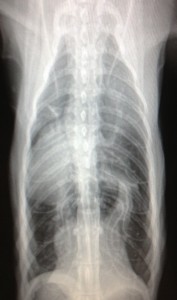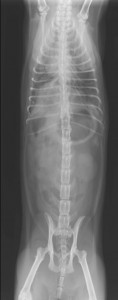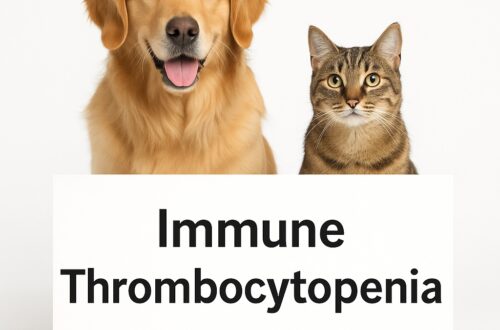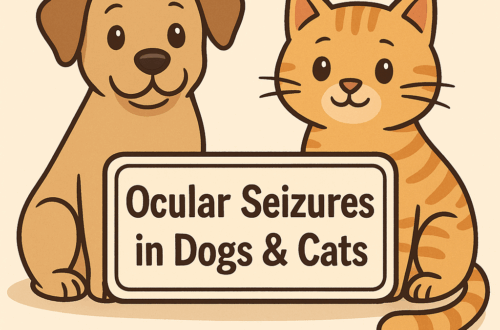If you bring your pet to a board-certified veterinary specialist, they may recommend repeating tests your family veterinarian already performed. This isn’t because they want to spend your money frivolously. This isn’t because they want to perform unnecessary tests. They repeat tests because they always want to provide optimal care. Achieving this goal requires using the best possible data to make treatment recommendations. This week I share my top three main reasons board-certified veterinary specialists may recommend repeating tests.
Things change
This is the most common reason I recommend repeating a test. Here’s a very common scenario. Your primary care veterinarians performed a complete blood count (this test evaluates red blood cells, white blood cells and platelets (cells that help form a proper blood clot) in their in-hospital laboratory. Your pet’s results showed a patient had low platelets. If your patient is subsequently referred to a specialists three or four days for this low platelet problem, they will almost certainly repeat a CBC. Why? There are several reasons for a platelet count to be decreased – bleeding, bone marrow disorders, and immune-mediated disease. They will evaluate a fresh blood sample to see how the previously documented abnormality has changed. Has it improved or worsened? This reevaluation is important because it helps the specialist recommend the most appropriate therapies. For example, a bleeding patient requires different treatments than a patient with a problem with its immune system or bone marrow. Repeating tests is, indeed, usually in a pet’s interest.
Different Experience & Set of Skills
Let’s consider a patient in need of an abdominal ultrasound. Any veterinarian can purchase ultrasound equipment. Having the equipment and having the training & expertise to use it are two entirely different things. The need to perform a complete abdominal ultrasound on a daily basis is not common in a primary care hospital. Contrast this experience with that of a board-certified veterinary radiologist or internal medicine specialist who completed at least three years of advanced clinical training, including the extensive use of ultrasonography. In clinical practice they often perform 5-10 abdominal ultrasound examinations every day!
Ultrasonography is a “real time” imaging modality – seeing internal organs in such a manner is more diagnostically helpful compared to looking at still images. If provided with pictures from another clinician’s ultrasound examination, specialists can only evaluate what is captured in those pictures. Is the image an accurate or complete representation of a pet’s problem? Specialists may recommend repeating tests like abdominal ultrasound examinations to help them make an accurate diagnosis!
Detail & Quality Matter
The best way I can of to illustrate this point is to consider a pet’s need for radiographs. During veterinary school, all veterinary students are taught proper radiographic techniques. We are taught to use appropriate exposure and to focus the x-ray beam only on the site of interest. These are two basic principles for obtaining diagnostic quality radiographs. Unfortunately, they are too commonly disregarded.
Let’s consider an example of a cat that is having trouble breathing. For this patient we want to look at radiographs of the lungs. The x-ray beam should be focused only on the chest cavity to allow as much detail as possible. Unfortunately, this focused image isn’t what typically comes across a specialist’s desk. What do they see? They most commonly see what is affectionately called a “cat-o-gram”, a radiograph of a cat’s entire body. This type of radiograph isn’t appropriate because it doesn’t provide the best detail to make informed recommendations for pets.


Let’s also discuss the exposure of a radiograph, that is how light or dark an image is when developed. Think about a warm gooey chocolate chip cookie. Who doesn’t like a warm, gooey chocolate chip cookie?! We want a radiograph to be like a warm gooey perfect cookie. Unfortunately, a radiograph can be under-exposed (think uncooked cookie dough), or it can be over-exposed (think burned cookie). Under- and over-exposed radiographs aren’t helpful, and as such, specialists may need to re-take them to help them make an accurate diagnosis.
The take-away message about specialists repeating tests…
The need for diagnostic testing is inevitable when pet’s get sick. Primary care veterinarians do an admirable job helping pet owner’s travel down their pet’s diagnostic pathway. Pet owners may be referred to board-certified veterinary specialists who need to repeat some tests already performed by family veterinarians. This repeat testing is not to waste your hard-earned money. Rather, the specialist is building upon the appropriate and logical investigation initiated by your family veterinarian to get to the bottom of a pet’s illness.
To find a board-certified veterinary internal medicine specialist, please visit the American College of Veterinary Internal Medicine.
Wishing you wet-nosed kisses,
CriticalCareDVM









Very informative! Thank you!
I’m glad you found the information helpful!